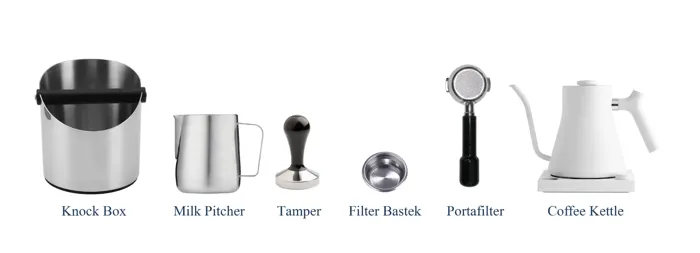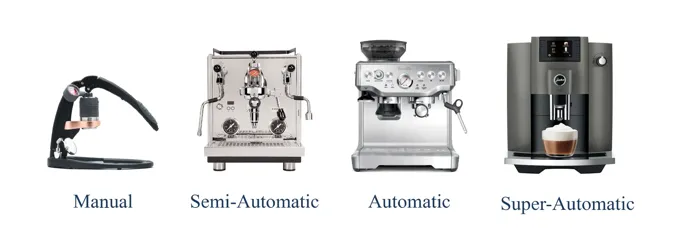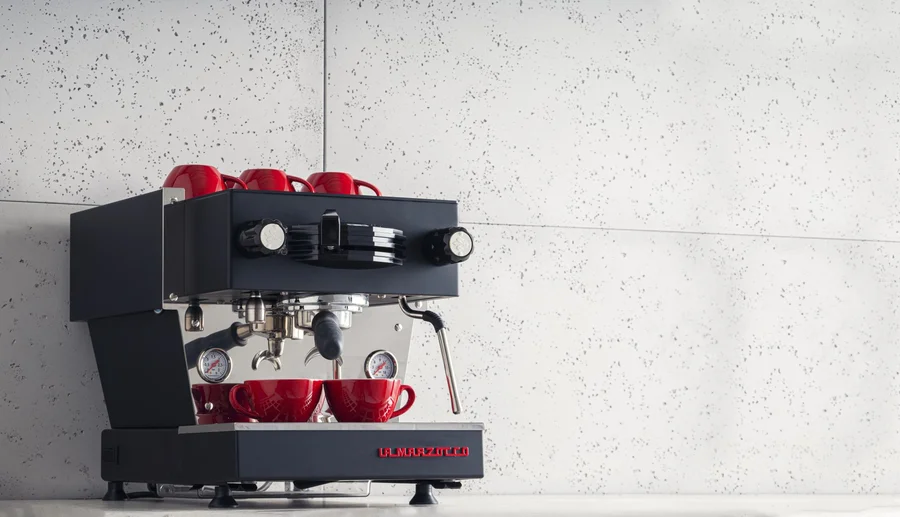Top Espresso Machines Brands Based In germany Brands
Here's what we recommend for:
Affordability
3.8/5
Profitec machines are positioned in the mid-to-high range, with prices typically starting at $900 and going up to $2,500 or more. While they are more expensive than entry-level brands, Profitec offers premium features like special pressure process, dual boilers, pre-infusion and PID control, justifying the higher price. For those who want professional-level espresso at home, Profitec offers great value, but it is less affordable for those with a limited budget.
Build Quality & Durability
4.7/5
Profitec machines are built with commercial-grade components, ensuring excellent long-term durability and reliability. Known for their solid construction, these machines can withstand heavy use and continue to perform well for many years. While maintenance will ensure their longevity, the blend of German engineering with Italian craftsmanship enough to making them a good investment for serious espresso enthusiasts.
Range of Machines
4.2/5
Profitec is renowned for its high-quality semi-automatic machines, blending German engineering with Italian craftsmanship. Their lineup caters to both entry-level enthusiasts and seasoned baristas. Profitec offers a relatively diverse range of pricing compared to other high-end brands, spanning from more affordable entry-level machines to premium models, catering to a variety of budgets. Celebrated for their durability, precision, and user-centric designs, making them a preferred choice for those seeking a premium...
Design & Appearance
4.7/5
Profitec’s machines embrace a classic, industrial design with a focus on functionality and robust build quality. Mostly comes with wooden ergonomic knobs and levers, they present professional, solid and timeless look. An absolute statement of luxury and design, they bring clean edges and a puristic form in expressive stainless steel.

Handcrafted Precision: Masterful engineering and precision

Optimized Extraction: with most advanced brewing group

Stunning Industrial Design with Elegance

Commercial-Grade Components: Known for their solid construction

Designed for Professionals: Best feature-rich option for users with experience

Expensive Initial Investment

No Automatic Frothing: Unlike some other brands, and challenging for beginners
Everything You Need to Know
About Home Espresso Machines
Love that first sip of espresso in the morning? Why not bring the café experience to your kitchen? A good home espresso machine can turn your home into your personal barista station, and we’re here to help you find the perfect one! This guide breaks down everything you need to know about home espresso machines—from how they work to the key features you should keep in mind when picking your new coffee companion. Get ready, we’ve got tips to help you make the perfect espresso right at home.
How Espresso Machines Work
An espresso machine is designed to brew coffee by forcing pressurized water through finely-ground coffee beans. The process results in a concentrated shot of coffee, known as espresso.
Here’s a quick overview of the key components involved in the brewing process:
Portafilter: The handle and basket where the coffee grounds are placed.
Boiler: Heats the water to the ideal brewing temperature.
Pump: Creates the pressure required to force hot water through the coffee grounds.
Group Head: Where the portafilter attaches to the machine, directing the pressurized water through the coffee grounds.
By controlling these components, espresso machines ensure a perfect cup of espresso.

Types of Espresso Machines
There are four main types of espresso machine, each offering different levels of control, automation, and price. Here's a breakdown:
Manual Espresso Machines
As the most traditional type of machine, manual espresso machines are not the focus of our discussion. They use a lever to apply pressure, which the user must operate by hand, and they don’t consume electricity.
Semi-Automatic Espresso Machines
Similar to the machines commonly found in cafés, they offer a balance between control and convenience. The user is responsible for grinding, tamping, and adding coffee to the portafilter, while the machine automatically handles temperature, pressure, water flow, and the brewing process. These machines allow you to customize your espresso experience.
Automatic Espresso Machines
With automatic machines, you need to prepare the portafilter and press a few buttons. The machine handles the tamping, brewing, timing, and sometimes even the milk frothing.
Super-Automatic Espresso Machines
Super-automatics are the most advanced. You only need to press a button. They grind the beans, tamp, brew, froth milk, and even clean themselves. It gives you the most comfort but no customization or control.

Key Features to Look For
When shopping for an espresso machine, there are several important features to consider to ensure you’re getting the best machine for your needs:
Pressure and Pump Systems
Espresso requires a consistent pressure of around 9 bars to extract the perfect shot. Look for machines with a high quality pump to ensure reliable performance.
Temperature Control
Consistent water temperature is key to brewing espresso. Most machines maintain a steady temperature around 200°F. Machines with PID (Proportional-Integral-Derivative) controllers offer more precise control over temperature.
Steam Wand and Frothing Milk
If you enjoy lattes or cappuccinos, a steam wand is essential. It allows you to froth milk to the perfect texture for your favorite drinks. Some machines offer automatic milk frothing features for added convenience.
Grinder and Grind Settings
A built-in grinder provides fresh coffee grounds every time you brew, but it’s important to look for machines with adjustable grind settings to suit different coffee beans and personal preferences.
Drip Tray, Portafilter Size, and Build Quality
A durable build is essential for longevity. Look for machines with stronger materials like stainless steel for better durability. A larger drip tray and portafilter size are also important for larger cups or mugs.
Frequently Asked Questions (FAQs)
What is a hybrid espresso machine?
Hybrid espresso machines offer both manual control and automation, giving users the flexibility to take charge of certain aspects of the brewing process while also offering automated features when you need just convenience.
What’s the difference between milk frothing systems?
Manual Frothing: This system requires the user’s full control and attention, as it works with a steam wand. It needs a learning curve and some skill, but gives the best froth and foam texture.
Semi-Automatic Frothing: These systems allow you to choose the amount of the milk, temperature and foam level but automatically perform the operation and froth the milk. They give you a bit more control over the final result.
Fully Automatic Frothing: Just fill up the milk container! These systems fully automate the frothing process based on the beverage type and pre-programmed functions. It doesn’t offer much customization but ensures consistency and ease of use.
What is a bean-to-cup machine?
Bean-to-cup machines aren't a separate category, but rather a feature that can be found in some automatic espresso machines. These machines are equipped with a built-in grinder that grinds the beans, then automatically transfers the ground coffee to the portafilter and starts the brewing process.
How often should I clean my espresso machine?
Regularly cleaning your espresso machine is essential for maintaining its performance.
Cleaning the group head, rinsing the portafilter or wiping the steam wand is necessary after each use. However deep cleaning, such as descaling or backflushing, should be done every few months or according to your machine's manual.
Do I need to use filtered water for my espresso machine?
We strongly recommend using filtered or bottled water in your espresso machine. It improves the flavor of your espresso while also preventing mineral buildup inside the machine and keeps your machine in good condition. Hard water can lead to scaling, which can reduce your machine’s efficiency and lifespan.
How do I know when it’s time for a deep cleaning of my espresso machine?
For deep cleanings, such as descaling or backflushing, most machines have a reminder or indicator light that alerts you when it's time. Typically, this should be done every 2-3 months, depending on water hardness and usage frequency, though you can also follow the guidelines in the machine's manual.
What is PID control in espresso machines?
PID (Proportional-Integral-Derivative) control is a system that precisely manages the temperature, and ensures water remians consistently stable.
If the temperature drops below the ideal level, the PID system prevents brewing operation, and activates the heating elements until the water reaches the optimal range.
Sometimes delays the brewing but this helps prevent poor extraction.

Can I use capsules in espresso machines?
In some espresso machines, commonly known as all-in-one machines, using capsules is an option, but most machines do not support this, as they operate on different systems. For more details on capsule-based machines, check out our Single-Serve Espresso Machines page.
KEEP READING


















